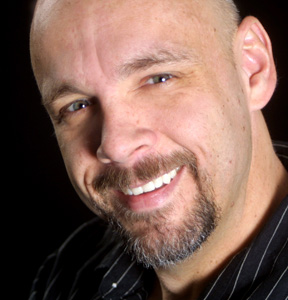Editorial
Front Page - Friday, November 27, 2009
The Critic's Corner
David Laprad

Horror fans are numb to everything scary movies have to offer. So how can a director rattle their nerves? Convince them the footage is real. More than a few viewers of “Paranormal Activity,” for example, believed they were seeing evidence of an actual haunting. How else to explain people running out of theaters in tears? It’s not THAT scary.
As the saying goes, however, “Fool me once, shame on you; fool me twice, shame on me.” People wisened up after seeing “Paranormal Activity,” and it’s going to be a long time before anyone buys the pseudo-documentary approach again.
That’s bad news for Olatunde Osunsami, writer and director of “The Fourth Kind,” which ostensibly mixes video of interviews with alien abductees with dramatically recreated footage of the same thing. If you believe the events in the movie are real, I’d like to talk with you about a bridge in Brooklyn.
“The Fourth Kind” is set in Nome, Ala., where more people per capita have disappeared since the ‘60s than any other American city. Osunsami wants you to believe extraterrestrials are responsible, and bends over backward to do so.
He opens his movie with an “interview” between him and psychologist Abbey Tyler, who questioned abductees before having her own encounter with an extraterrestrial — or so the story goes. To make the Q&A look real, Osunsami uses grainy low-resolution video. He then switches to dramatically recreated footage of Tyler’s counseling session with a man who sees an owl looking in through his bedroom window at night. When the guy goes bonkers, Osunsami splits the screen, showing the “original video” on one side and the dramatically recreated footage on the other.
Later, Osunsami takes this process to its extreme, splitting the screen four ways and dubbing the “real” things people said over the dramatically recreated dialogue. (Forgive my excessive use of quotation marks. You’re not here to see me using air quotes, so I have no choice.)
The sleight of hand, however, is both unconvincing and unnecessary. For starters, Osunsami claims to have changed the names of the people in the movie to protect their identity, but how hard would it be to find out the name of the sheriff in Nome in 2000? Also, the screen goes fuzzy every time the alien intelligence appears, leaving viewers with just a few seconds of disturbing imagery over the course of 98 minutes. Even the big reveal at the end of the movie is disappointing, with visual static on one side of the screen and subtitles of the alien’s dialogue on the other.
Osunsami probably made “The Fourth Kind” without being aware of the existence of “Paranormal Activity.” Even if he did know about the latter film, no one could’ve predicted its success. Regardless, his movie fails on its own terms. That’s too bad, because there appears to be a decent thriller underneath the docudrama veneer.
•••
There’s just one reason to see “2012.” And I think you know what it is. But in case you don’t, here are a few hints:
It’s not the story. In “2012,” solar flares heat up the Earth’s core, destabilizing the planet’s crust. Subsequently, over 6 billion people die in earthquakes and tsunamis. Writer and director Roland Emmerich, the man behind “Independence Day” and “The Day After Tomorrow,” tries to put a positive spin on the devastation by following one family’s attempts to survive. He fails, however, because it’s hard to forget the images of people clinging to collapsing skyscrapers and cars nose-diving into massive fissures in the ground.
It’s not the acting. Oliver Platt does a good turn as a snaky bureaucrat and Woody Harrelson has fun playing a nut job radio deejay that tells his listeners about the impending disaster, but none of the actors will be taking home an Oscar.
It’s not the running time. At two hours and 40 minutes, “2012” needs fewer scenes of non-essential characters bidding farewell to even less significant characters. In one scene, the best friend of the father of a main character calls his estranged daughter on the other side of the world to say goodbye. Less definitely would’ve been more.
It’s not Emmerich’s distain for organized religion. He shows the Christ the Redeemer statue in Rio de Janeiro crumbling, a crack forming between God and Adam’s finger in Michelangelo’s “Hand of God” and St. Peter’s Dome crushing thousands of Catholic worshippers. Emmerich shows Muslims praying at Mecca, but destroys no Islamic holy sites on camera.
Rather, the only reason to see “2012” is for its many scenes of jaw-dropping spectacle. It’s the most special effects intensive motion picture ever released, and every penny of its reported $200 million budget is on the screen. Buy some popcorn, take off your thinking cap and settle in for an amazing ride.
E-mail David Laprad at dlaprad@hamiltoncountyherald.
com.
|
|